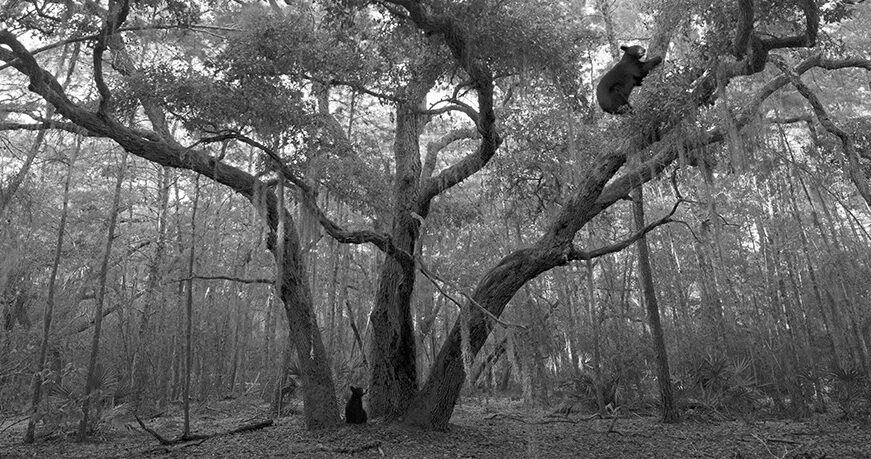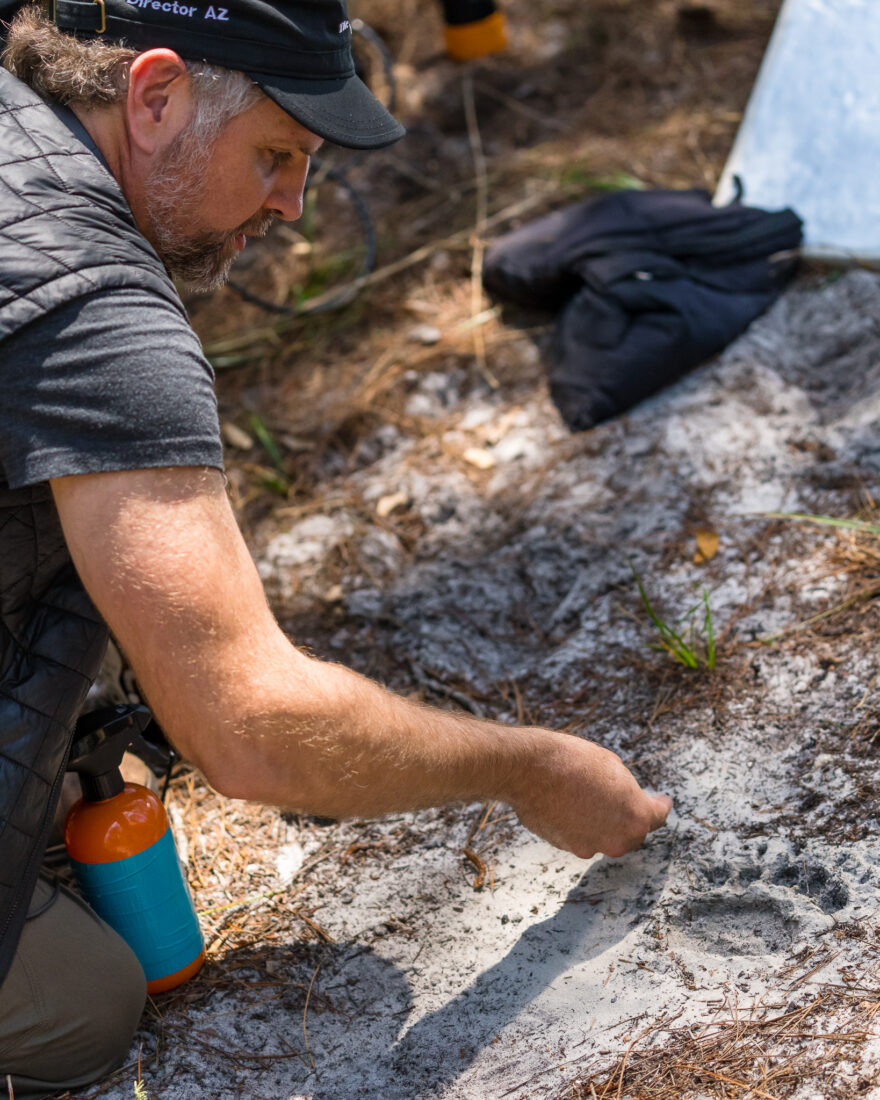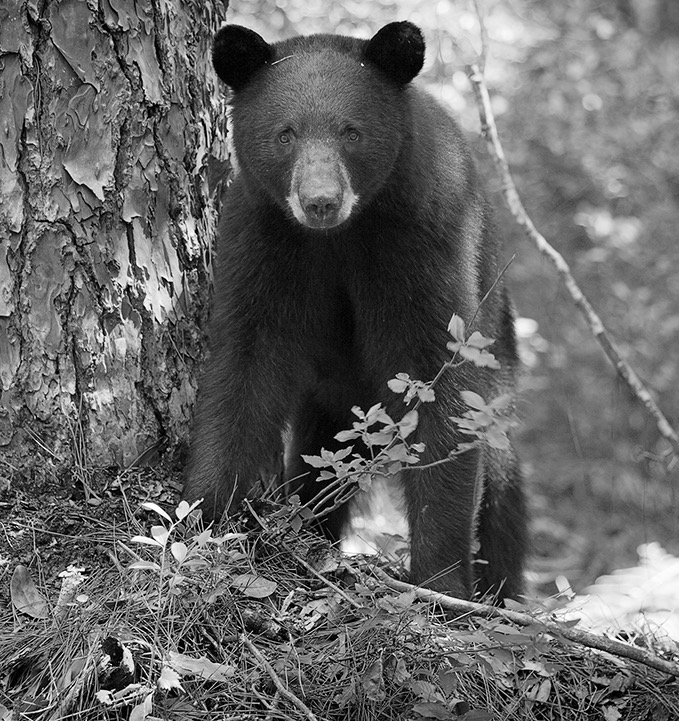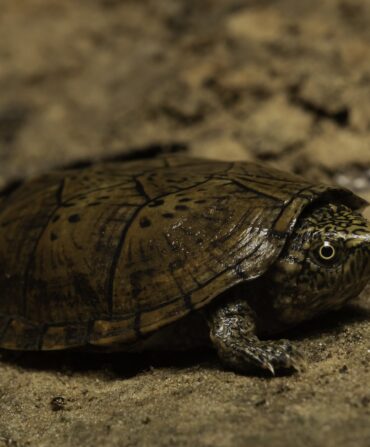Animal encounters that make national news from Florida this time of year usually feature sharks or alligators. But a few months ago, a viral video that wound up on CNN showcased a less expected creature paddling in the azure waters of a popular Panhandle vacation spot: a bear.
In the video, recorded in June, stunned beachgoers watched the mammal—some following alongside much too closely—as it swam with the waves onto shore before dashing off across the beach in Destin. “There are some places you do not expect to see a bear, and this is one of them,” the video voice-over proclaims.

But in recent years, bear sightings in Florida—especially in the northern part of the state where pine trees far outnumber palms—have become a regular occurrence. According to figures from the Florida Fish and Wildlife Conservation Commission, the black bear population has surged back from just several hundred bears in the 1970s to more than four thousand today—including the occasional few that find their way into the Gulf of Mexico and other waterways around the state.
Matthew Aresco, director of Nokuse, a privately owned, 55,000-acre natural preserve in the Panhandle’s Walton County, thinks the swimming bear was likely a yearling (that’s biologist-speak for at least a year old) that got lost in the process of dispersing (leaving its mother’s home range in search of its own).
“That’s what struck me—just how sad it was for that bear,” Aresco says. “It was clearly lost, trying to find new habitat, and ended up in Destin in the concrete jungle over there, with not a lot of options to disperse, other than to go back to try to find a way back to the forest where it came from. And hopefully it did. I mean, I know it wasn’t found on the highway anywhere.”
That the wayward youngster likely didn’t get hit by a car is indeed a good outcome. But the bear’s presence also illustrates a remarkable conservation success story throughout the Sunshine State in which the Florida black bear is just one part. One of sixteen subspecies of the American black bear and the only one in Florida, Ursus americanus floridanus is known as an umbrella species, whose conservation also bestows protection for other species. By protecting the bears’ habitat, an array of other creatures, including birds, reptiles, amphibians, and even fish are affected. Florida black bears also are known as an indicator species, whose health and well-being also act as an indicator of the overall health of an ecosystem.

Over the last few decades, Florida’s black bear populations have benefited from various state regulations that have brought it back from threatened species status in 1974. One of the most recent—and significant—was the Florida Wildlife Corridor Act, which the Florida legislature unanimously passed in June 2021 to formally designate much of the state’s land as part of an ecological network, including 10 million acres of protected conservation lands. It also set aside $400 million to protect it from development.
In the not-too-distant past, the picture was much grimmer for bears. The exploding logging and timber industry of the early twentieth century decimated forests across northwest Florida, destroying the habitat of bears and many other species in the process. Unregulated hunting also contributed. (It’s currently illegal to hunt or injure a Florida black bear outside of state-designated hunts. The last one was held in 2015 but was called off after just two days when close to three hundred bears were killed, prompting criticism from conservationists.)
Arix Zalace, a filmmaker and conservationist based in Walton County, notes the Panhandle is one of North America’s top five biodiversity hot spots. He’s at work on a new film, The Paper Bear: “The name is a nod to the Panhandle’s history as a lumber and then paper manufacturing powerhouse, which wiped out the area’s biodiversity,” Zalace says. “I don’t want to give too much away, but the movie tells this story through the eyes of the Florida black bear.”
To obtain footage for the film, which is scheduled for an early 2024 release, Zalace spent three months learning how to scout and track bears in their natural habitat, then about twelve to fourteen hours a day with them over the course of two and a half years during the pandemic.“ [Florida black bears] are so shy because they don’t really eat meat,” says Zalace, noting that about 95 percent of their diet is plants and insects. “They’re not aggressive. But that makes it incredibly difficult to film them in their natural environment because they’re hard to find and their sense of smell is so good. They smell you from a mile away.”

Bears also smell garbage and food scraps from a mile away—which is a big reason more Floridians are seeing them in their neighborhoods, especially those near woodlands. To eliminate this temptation, the FWC recommends as part of its “Living With Bears” guidelines securing trash cans, pet food, and birdseed and walking dogs on short leashes. Some counties, meanwhile, prohibit residents from setting out trash cans the night before pickup.
Indeed, as population growth continues to explode in Florida—the fastest-growing state in the country for the first time since 1957—newcomers also need to keep in mind the bigger picture about their furry neighbors.
“We have so many people moving here, and I hear people say, ‘I didn’t buy into this,’ and I’m like, no, actually you did buy into this,” Zalace says. “You bought a house next to a state forest, you bought a house next to some of the most pristine state parks in Florida. We can’t get into this mindset of ‘the bears are a nuisance.’ This was their home first.”








